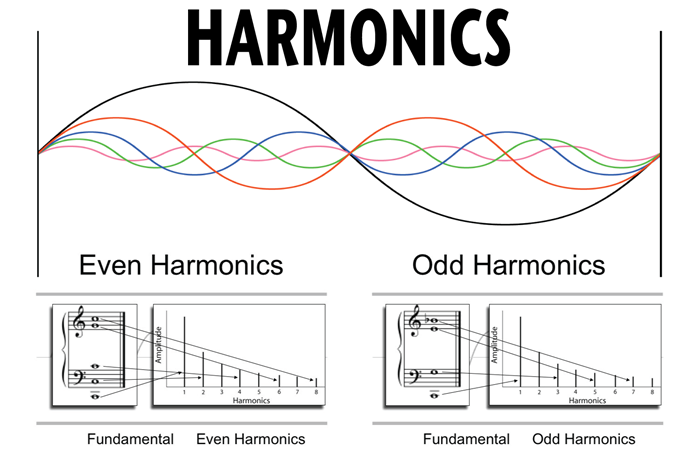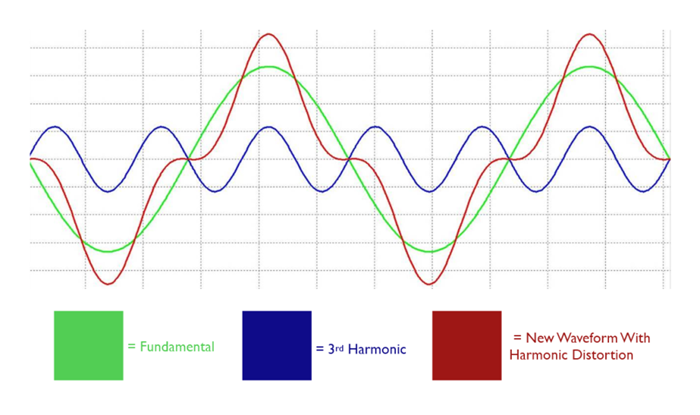產品分類
產品標籤
Fmuser網站
- es.fmuser.net
- it.fmuser.net
- fr.fmuser.net
- de.fmuser.net
- af.fmuser.net ->荷蘭語
- sq.fmuser.net ->阿爾巴尼亞人
- ar.fmuser.net ->阿拉伯語
- hy.fmuser.net - >亞美尼亞
- az.fmuser.net ->阿塞拜疆
- eu.fmuser.net ->巴斯克
- be.fmuser.net ->白俄羅斯語
- bg.fmuser.net - >保加利亞
- ca.fmuser.net ->加泰羅尼亞語
- zh-CN.fmuser.net ->中文(簡體)
- zh-TW.fmuser.net - >中國(繁體)
- hr.fmuser.net ->克羅地亞語
- cs.fmuser.net ->捷克
- da.fmuser.net ->丹麥語
- nl.fmuser.net - >荷蘭
- et.fmuser.net ->愛沙尼亞語
- tl.fmuser.net ->菲律賓
- fi.fmuser.net ->芬蘭語
- fr.fmuser.net - >法國
- gl.fmuser.net ->加利西亞語
- ka.fmuser.net ->喬治亞
- de.fmuser.net ->德語
- el.fmuser.net - >希臘
- ht.fmuser.net ->海地克里奧爾語
- iw.fmuser.net ->希伯來語
- hi.fmuser.net ->印地語
- hu.fmuser.net - >匈牙利
- is.fmuser.net ->冰島語
- id.fmuser.net ->印尼語
- ga.fmuser.net ->愛爾蘭
- it.fmuser.net - >意大利
- ja.fmuser.net ->日語
- ko.fmuser.net ->韓文
- lv.fmuser.net ->拉脫維亞
- lt.fmuser.net - >立陶宛
- mk.fmuser.net ->馬其頓語
- ms.fmuser.net ->馬來語
- mt.fmuser.net ->馬耳他語
- no.fmuser.net - >挪威
- fa.fmuser.net ->波斯語
- pl.fmuser.net ->波蘭語
- pt.fmuser.net ->葡萄牙語
- ro.fmuser.net - >羅馬尼亞
- ru.fmuser.net ->俄語
- sr.fmuser.net ->塞爾維亞語
- sk.fmuser.net ->斯洛伐克
- sl.fmuser.net - >斯洛文尼亞
- es.fmuser.net ->西班牙語
- sw.fmuser.net ->斯瓦希里語
- sv.fmuser.net ->瑞典語
- th.fmuser.net - >泰國
- tr.fmuser.net ->土耳其語
- uk.fmuser.net ->烏克蘭語
- ur.fmuser.net ->烏爾都語
- vi.fmuser.net - >越南
- cy.fmuser.net ->威爾士語
- yi.fmuser.net - >意第緒語
什麼是諧波?

A harmonic is any member of the harmonic series.諧波是諧波系列的任何成員。 The term is employed in various disciplines, including music, physics, acoustics, electronic power transmission, radio technology, and other fields.該術語用於各種學科,包括音樂,物理,聲學,電子功率傳輸,無線電技術和其他領域。 It is typically applied to repeating signals, such as sinusoidal waves.它通常應用於重複信號,例如正弦波。 A harmonic of such a wave is a wave with a frequency that is a positive integer multiple of the frequency of the original wave, known as the fundamental frequency.這種波的諧波是頻率為原始波頻率的正整數倍的波,稱為基波頻率。 The original wave is also called the 1st harmonic, the following harmonics are known as higher harmonics.原始波也稱為一次諧波,隨後的諧波稱為高次諧波。 As all harmonics are periodic at the fundamental frequency, the sum of harmonics is also periodic at that frequency.由於所有諧波在基本頻率上都是周期性的,因此諧波總和在該頻率上也是周期性的。 For example, if the fundamental frequency is 50 Hz, a common AC power supply frequency, the frequencies of the first three higher harmonics are 100 Hz (2nd harmonic), 150 Hz (3rd harmonic), 200 Hz (4th harmonic) and any addition of waves with these frequencies is periodic at 50 Hz.例如,如果基本頻率為XNUMX Hz(一個通用的交流電源頻率),則前三個高次諧波的頻率分別為XNUMX Hz(第二諧波),XNUMX Hz(第三諧波),XNUMX Hz(第四諧波)以及任何加法具有這些頻率的波的周期為XNUMX Hz。
特徵:
A whizzing, whistling tonal character, distinguishes all the harmonics both natural and artificial from the firmly stopped intervals;嘶啞,吹哨的音調特徵將所有自然和人工的諧波與牢固停止的間隔區分開; therefore their application in connection with the latter must always be carefully considered.因此,必須始終認真考慮將其與後者結合使用。
Most acoustic instruments emit complex tones containing many individual partials (component simple tones or sinusoidal waves), but the untrained human ear typically does not perceive those partials as separate phenomena.大多數聲學樂器發出的複雜音調包含許多單獨的部分(分量簡單音調或正弦波),但是未經訓練的人耳通常不會將這些部分視為單獨的現象。 Rather, a musical note is perceived as one sound, the quality or timbre of that sound being a result of the relative strengths of the individual partials.而是,音符被視為一種聲音,該聲音的質量或音色是各個聲部的相對強度的結果。 Many acoustic oscillators, such as the human voice or a bowed violin string, produce complex tones that are more or less periodic, and thus are composed of partials that are near matches to integer multiples of the fundamental frequency and therefore resemble the ideal harmonics and are called "harmonic partials" or simply "harmonics" for convenience (although it's not strictly accurate to call a partial a harmonic, the first being real and the second being ideal).許多聲學振盪器(例如人的聲音或拉弦的小提琴弦)會產生或多或少週期性的複雜音調,因此由與基本頻率的整數倍近似匹配的部分組成,因此類似於理想諧波,並且為方便起見,將其稱為“諧波次諧波”或簡稱為“諧波”(儘管嚴格地說,將部分諧波稱為諧波並不准確,第一個是實諧波,第二個是理想諧波)。
Oscillators that produce harmonic partials behave somewhat like one-dimensional resonators, and are often long and thin, such as a guitar string or a column of air open at both ends (as with the modern orchestral transverse flute).產生諧波分量的振盪器的行為有點像一維諧振器,並且通常又長又細,例如吉他弦或兩端開有空氣的音柱(與現代管弦樂橫向笛子一樣)。 Wind instruments whose air column is open at only one end, such as trumpets and clarinets, also produce partials resembling harmonics.氣柱僅一端開口的管樂器(例如喇叭和單簧管)也會產生類似諧波的聲部。 However they only produce partials matching the odd harmonics, at least in theory.但是,至少從理論上講,它們僅產生與奇次諧波匹配的部分。 The reality of acoustic instruments is such that none of them behaves as perfectly as the somewhat simplified theoretical models would predict.聲學樂器的現實情況是,它們的行為都不像簡化的理論模型所預測的那樣完美。
Partials whose frequencies are not integer multiples of the fundamental are referred to as inharmonic partials.頻率不是基頻整數倍的部分稱為非諧波部分。 Some acoustic instruments emit a mix of harmonic and inharmonic partials but still produce an effect on the ear of having a definite fundamental pitch, such as pianos, strings plucked pizzicato, vibraphones, marimbas, and certain pure-sounding bells or chimes.一些聲學樂器會發出諧波和非諧音的混合音,但仍會對具有確定的基本音高的耳朵產生影響,例如鋼琴,彈撥的披薩琴弦,顫音琴,馬林巴琴和某些純正的鈴鐺或鐘聲。 Antique singing bowls are known for producing multiple harmonic partials or multiphonics.Other oscillators, such as cymbals, drum heads, and other percussion instruments, naturally produce an abundance of inharmonic partials and do not imply any particular pitch, and therefore cannot be used melodically or harmonically in the same way other instruments can.古董唱缽可產生多個諧波聲或多聲樂,而其他振盪器(例如,鼓頭和其他打擊樂器)自然會產生大量非諧音聲,並不意味著任何特定的音高,因此不能使用旋律或與其他樂器的諧調相同。

An overtone is any partial higher than the lowest partial in a compound tone.泛音比複合音調中最低的部分高。 The relative strengths and frequency relationships of the component partials determine the timbre of an instrument.零件聲部的相對強度和頻率關係決定了樂器的音色。 The similarity between the terms overtone and partial sometimes leads to their being loosely used interchangeably in a musical context, but they are counted differently, leading to some possible confusion.泛音和部分之間的相似性有時會導致它們在音樂環境中被鬆散地互換使用,但是對它們的計數有所不同,從而導致一些可能的混淆。 In the special case of instrumental timbres whose component partials closely match a harmonic series (such as with most strings and winds) rather than being inharmonic partials (such as with most pitched percussion instruments), it is also convenient to call the component partials "harmonics" but not strictly correct (because harmonics are numbered the same even when missing, while partials and overtones are only counted when present).在樂器音色的特殊情況下,其組成部分與諧波序列(例如,大多數琴弦和風)緊密匹配,而不是非諧音部分(例如,對於大多數音高打擊樂器),也可以方便地將組成部分稱為“諧音” ”,但並非嚴格正確(因為諧波即使缺失也被編號,而偏音和泛音僅在存在時才計數)。 This chart demonstrates how the three types of names (partial, overtone, and harmonic) are counted (assuming that the harmonics are present).此圖表演示瞭如何對三種類型的名稱(部分,泛音和諧波)進行計數(假設存在諧波)。
In many musical instruments, it is possible to play the upper harmonics without the fundamental note being present.在許多樂器中,可以在沒有基本音調的情況下演奏高次諧波。 In a simple case (eg, recorder) this has the effect of making the note go up in pitch by an octave, but in more complex cases many other pitch variations are obtained.在簡單的情況下(例如,錄音機),這具有使音符的音高上升八度的效果,但是在更複雜的情況下,可以獲得許多其他音高變化。 In some cases it also changes the timbre of the note.在某些情況下,它還會改變音符的音色。 This is part of the normal method of obtaining higher notes in wind instruments, where it is called overblowing.這是在吹奏樂器中獲取較高音符的正常方法的一部分,這種方法稱為過吹。 The extended technique of playing multiphonics also produces harmonics.演奏多音的擴展技術也會產生諧波。 On string instruments it is possible to produce very pure sounding notes, called harmonics or flageolets by string players, which have an eerie quality, as well as being high in pitch.在弦樂器上,可能會產生非常純淨的音符,被弦樂演奏者稱為和聲或鞭毛,音質令人毛骨悚然,而且音調高。 Harmonics may be used to check at a unison the tuning of strings that are not tuned to the unison.諧波可用於統一檢查未調到一致的琴弦的調音。 For example, lightly fingering the node found halfway down the highest string of a cello produces the same pitch as lightly fingering the node 1⁄3 of the way down the second highest string.例如,輕輕地指大提琴最高弦下半部分的節點產生的音高與輕輕地觸及第二高弦下半部的XNUMX⁄XNUMX節點產生相同的音高。 For the human voice see Overtone singing, which uses harmonics.有關人聲,請參見泛音唱歌,它使用諧波。
While it is true that electronically produced periodic tones (eg square waves or other non-sinusoidal waves) have "harmonics" that are whole number multiples of the fundamental frequency, practical instruments do not all have this characteristic.雖然電子產生的周期性音調(例如方波或其他非正弦波)確實具有“諧波”,而“諧波”是基頻的整數倍,但實際儀器並不都具有此特性。 For example, higher "harmonics"' of piano notes are not true harmonics but are "overtones" and can be very sharp, ie a higher frequency than given by a pure harmonic series.例如,鋼琴音符的較高“諧波”不是真正的諧波,而是“泛音”,並且可能非常尖銳,即比純諧波序列給定的頻率更高。 This is especially true of instruments other than stringed or brass/woodwind ones, eg, xylophone, drums, bells etc., where not all the overtones have a simple whole number ratio with the fundamental frequency.對於除弦樂器或銅管/木管樂器以外的樂器,例如木琴,鼓,鈴等,尤其如此,在這些樂器中,並非所有泛音都具有基本頻率的簡單整數倍。 The fundamental frequency is the reciprocal of the period of the periodic phenomenon.基本頻率是周期性現象的周期的倒數。
你也許也喜歡:
>>Avid推出新的Pro系列插件; 專業多頻段動力學和專業次諧波

